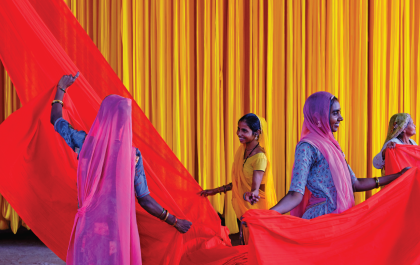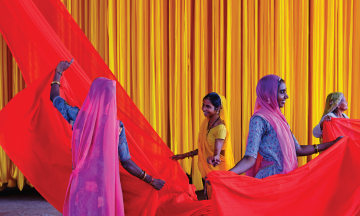By Murali Menon
They are collectively the world’s greatest climbing community but have largely been ignored till recently. A book now details their greatest achievement and the indispensability of summiting the world’s tallest mountains
Most of us have this idealised view of Sherpas as tough, committed, welcoming mountain guides who’ve helped mountaineers conquer numerous towering mountains in the Himalayas, especially Everest. Their real story though has several other dimensions, say Kathmandu-based journalist Pradeep Bashyal and social science researcher Ankit Babu Adhikari, whose recently-released book, Sherpa: Stories of Life and Death from the Forgotten Guardians of Everest, is an intimate account of the Nepalese ethnic group who are crucial to mountaineering in the Himalayas.
Every climbing season, for example, a team of icefall doctors, which consists of highly skilled Sherpas, create and maintain a route across the treacherous Khumbu Icefall on Everest. They do that across dozens of mountains that are popular with mountaineers across Nepal. Take Sherpas out of the equation and there would be no guided mountaineering expeditions — at least from the Nepal side.

Bashyal and Adhikari’s deeply researched book tells the story of the first-generation climbing Sherpas from the 1930s and 1940s, whose history spans key geographies, including Khumbu, Rowaling, and Darjeeling, and brings into focus the modern generation descendants who are no longer content with being invisible men on Everest. Here’s what we learned from the book and from a chat with its authors.
Before the 1950s, Adhikari says, the Sherpas’ only source of livelihood was trading with Tibet, which ended with China’s annexation of the country. Life also did not change overnight for Sherpas after Edmund Hillary and Tenzing Norgay’s first ascent of Everest in 1953, say the authors. Nepal, which was long governed by hereditary rulers and had a turbulent transition to a multiparty parliamentary system, only allowed one expedition per season per route on Everest until the late 1980s. “However, democracy was established in 1990 and the king’s direct rule ended. Nepal then opened to foreign tourists and adopted a liberal economic policy, under which the mountaineering industry got to explore its real potential,” write Bashyal and Adhikari.
Tenzing Norgay might remain the most famous Sherpa until climate change kills us all, but there were several other first-generation Sherpa heroes, say the authors. “Several other Sherpas struggled with Norgay through the 1940s. These included Ang Tharkay Sherpa who was both a mentor and friend of Norgay. Then there were supporting Sherpas and porters such as Kanchha Sherpa, without whom the first successful summit of Everest wouldn’t have been possible,” says Adhikari. Kanchha is the last living member of the team that accomplished the first ascent.
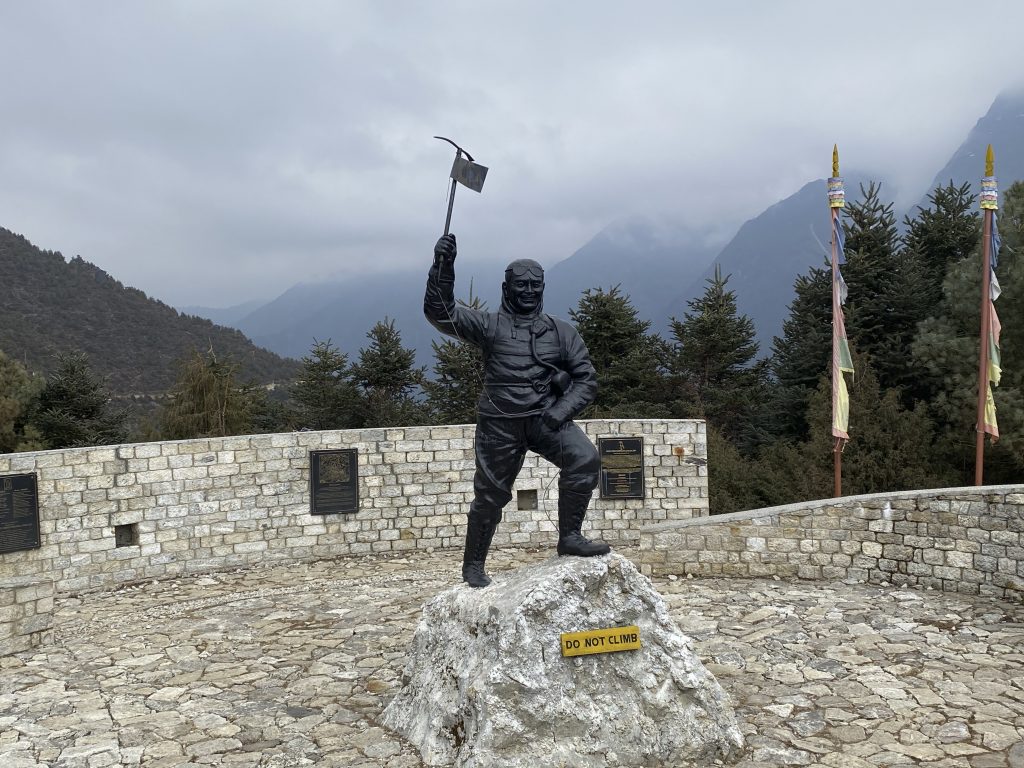
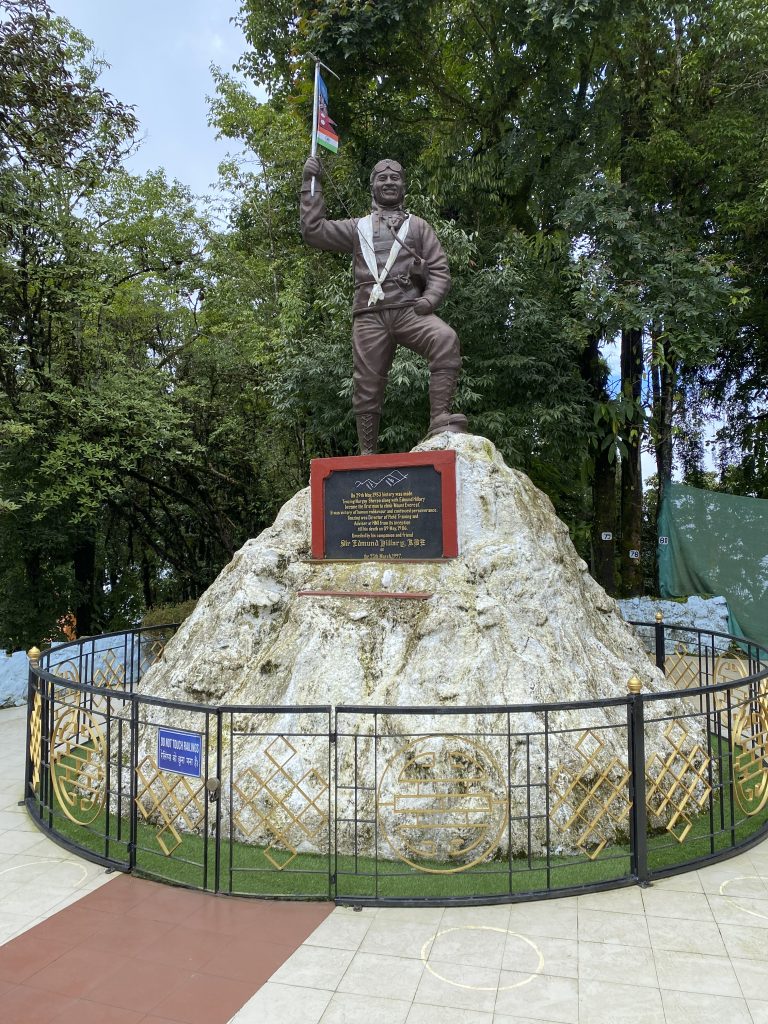
(Left) Statue of Tenzing Norgay Sherpa in front of a museum in Namche Bazar by Pradeep Bashyal, (Right) Tenzing Norgay’s statue in Darjeeling, HMI by Pradeep Bashyal
The late Pasang Lhamu Sherpa, the first Nepali woman to climb Everest, is a national hero. Pasang Lhamu summited Everest in 1993 but died on her way down. In 2019, Furdiki Sherpa and Nima Doma Sherpa summited the mountain in honour of their climber husbands. In 2021, Dawa Yangzum Sherpa, 32 and an Everest summiteer became Nepal’s first internationally recognised female mountain guide.
Over 4,000 people have climbed Everest since 1953, but less than 200 have done it without oxygen. The late Ang Rita Sherpa was the first to summit Everest 10 times without oxygen. In 1987, he became the first man to conquer Everest without oxygen in winter. Ang Rita is not the only Sherpa to feature in the record books. Every climbing season, Sherpas set new records —often by breaking their respective previous records. In May, Kami Rita Sherpa scaled Everest for the 26th time, breaking his own record set last May. In August, his compatriot Sanu Sherpa achieved the ‘unbeatable’ by becoming the only person in the world to climb the 14 highest peaks twice. “The list is long. Babu Chhiri Sherpa spent 21 hours at the summit of Everest without supplemental oxygen in May 1999. That record is still unbroken. Mingma David Sherpa remains the youngest mountaineer to have climbed all eight-thousanders (in 2019); he was 30 then. Over the years, Sherpas have set speed records, rescue records,” says Adhikari.
In January, Mingma Sherpa and Chhang Dawa Sherpa, two out of three Sherpa brothers, became the first Nepalis to reach the South Pole, as part of their mission to achieve the ‘Explorer’s Grand Slam’. The Explorers Grand Slam or Adventurers Grand Slam is an adventurers’ challenge to reach the North Pole, the South Pole, and all the Seven Summits. Mingma is the first South Asian to summit the world’s 14 highest peaks. The brothers are also the first siblings to climb the 14 highest mountains. Tashi Lakpa, the youngest of the trio, is the youngest person to climb Everest without supplementary oxygen. He set the record when he was 19. The brothers operate the Seven Summit Treks, Nepal’s largest expedition company.
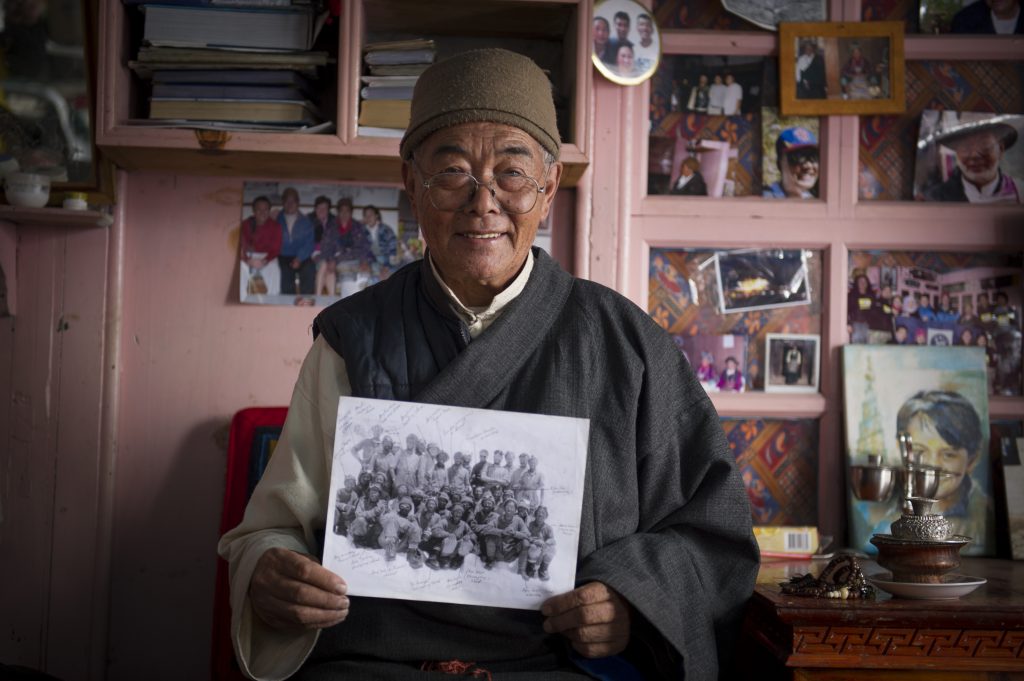
Most sherpas, who begin their career as porters before becoming guides on Everest, earn anywhere between Nepali Rupee 4 to 5 lakh every climbing season. But men such as Tendi Sherpa and Mingma David Sherpa are celebrated guides and mountaineers who are paid top dollar for their services and are mountaineering celebrities in their own right. These men, along with the likes of Tashi Lakpa, serve as role models for the younger generation of sherpas looking to make their mark and emerge out of the shadow of foreign climbers.
According to Adhikari and Bashyal, the Sherpas are heavily impacted by climate change. Grazing pastures for their yaks are disappearing and unpredictable weather has impacted farming. Climbing has also become more dangerous, say the authors. The Khumbu Icefall has become more volatile, and many Sherpas consider the 2014 avalanche, which killed 16 of their compatriots, as a warning sign. Here’s how Kami Rita Sherpa sees it in the book: “You can feel the changes in Everest in your every step up. It’s getting easier in some places and elsewhere it has become harder to climb. It’s not about how easy or difficult it’s getting. Something’s off! And I know it’s not going right.”
Reproduced with permission from Mansworldindia.com






